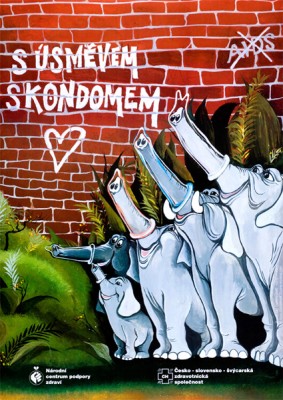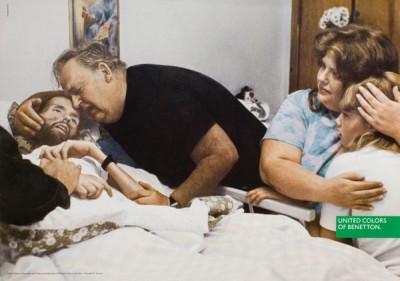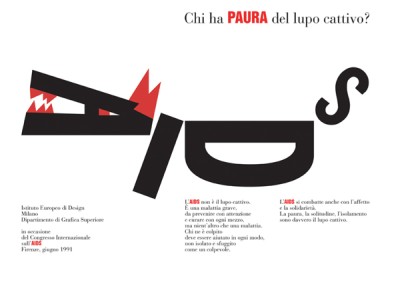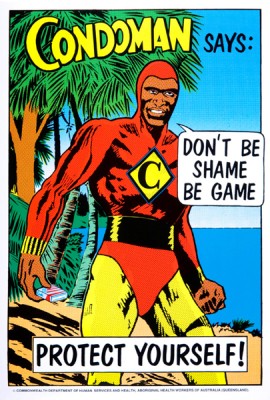
Australia, Condoman says: Don't be shame be game. Use condoms! Protect yourself.
The Condoman character was part of a broader prevention campaign that targeted younger Aboriginal audiences.The image correlates masculinity and responsible sexual behavior by challenging the appeal of promiscuity and suggests that safe sex is not a reason to feel embarrassed or disgraced. Design: Redback Graphix for NACAIDS Canberra 1987. 76 x 53 cm.

Australia, Prevention of AIDS. Everybody's business
The two people are housed in condoms where they are safe from potentially infectious body fluids, which are indicated, in the outer patterning. The central image shows the continuation of normal lives without HIV infection through the use of condoms. This image also indicates the importance of protecting unborn children from AIDS. The poster depicts a man and a woman, one black and one white, shown protected within a condom-like enclosure. The female figure includes a glowing image of a womb.' Australian Aboriginal artist: Bronwyn Bancroft, © Commonwealth of Australia, Department of Human Services and Health, AIDS/Communicable Diseases Branch, Canberra, Australia, 1992. 61 x 89 cm.
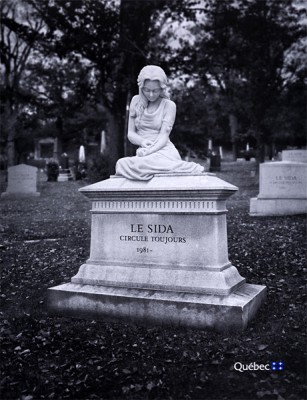
Canada, Grave monument, AIDS is still circulating 1981 -
The poster depicts a woman in the act of injecting herself with an implied infected needle in the form of a funerary stone statuary. The visual epitaph that the sculpture conveys, the consequence of practicing using infected needles, immediately shatters the artistic beauty of the image. Advertising Agency: MARKETEL, Creative Team: Gilles Dusablon, Linda Dawe, Stephane Gaulin. 2004. 33 x 43 cm.
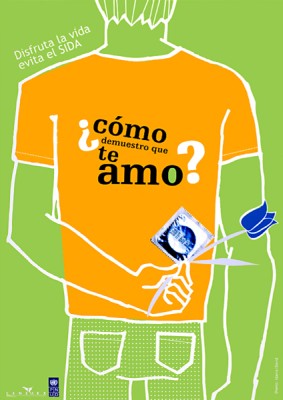
Cuba, Enjoy Life, Avoid AIDS. How do I show that I love you?
The poster depicts a young man with his back to the viewer, holding a single flower and a condom in his left hand. Condom use is still stigmatized in many parts of the Caribbean, including Cuba. People are often too embarrassed to buy condoms in shops and even to use them with their partners. Design: Idania/David. Nd. 41.9 x 59.2 cm.
